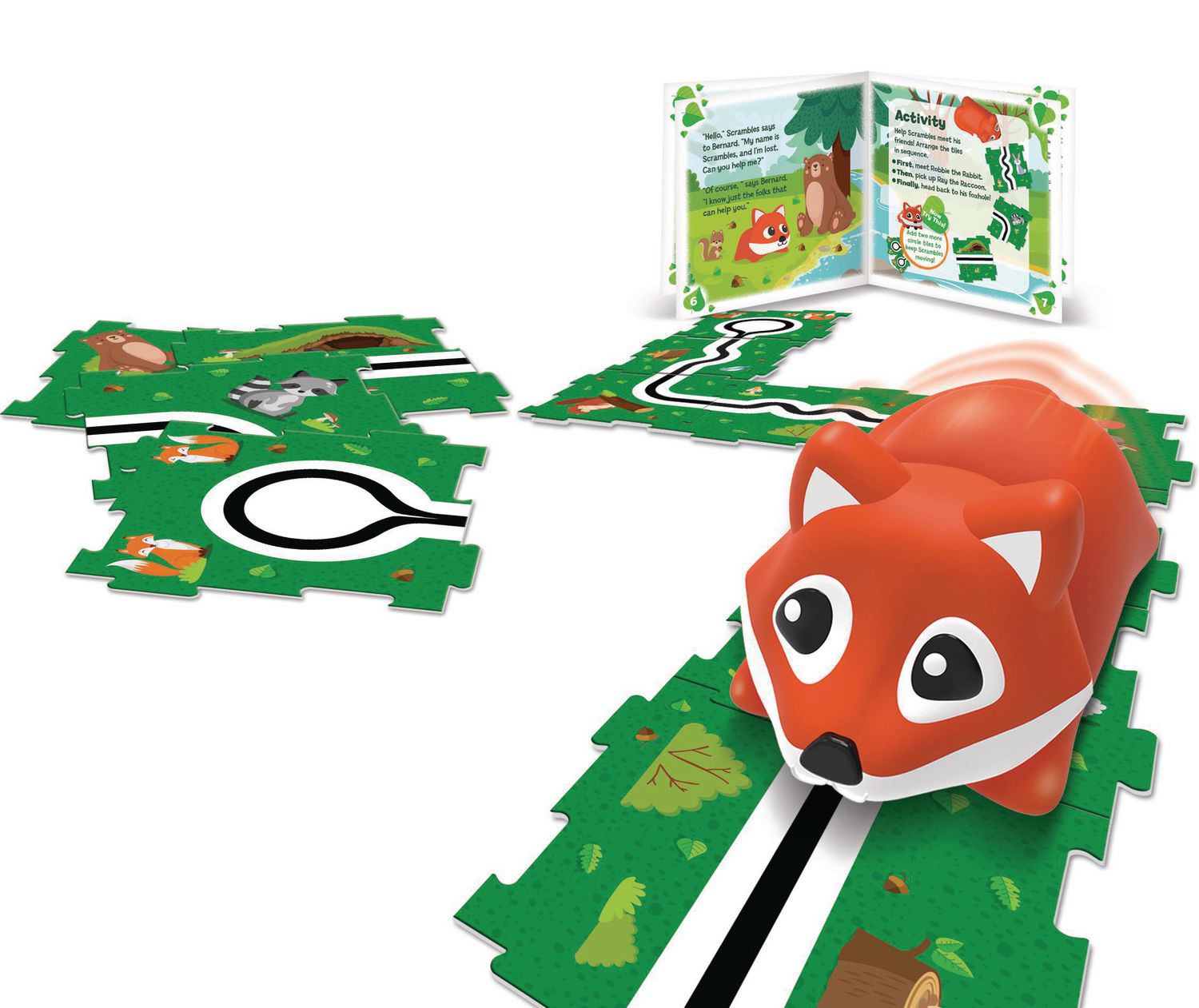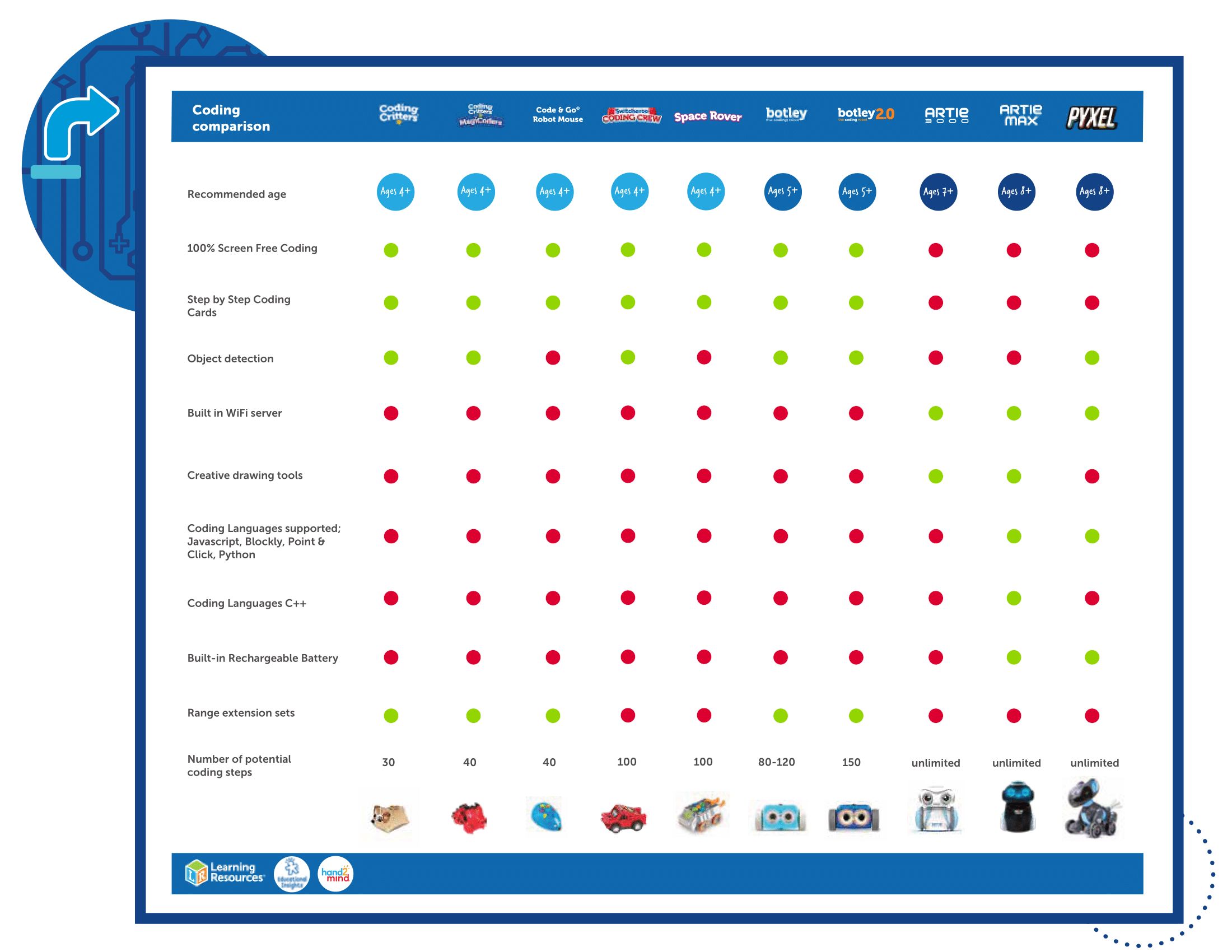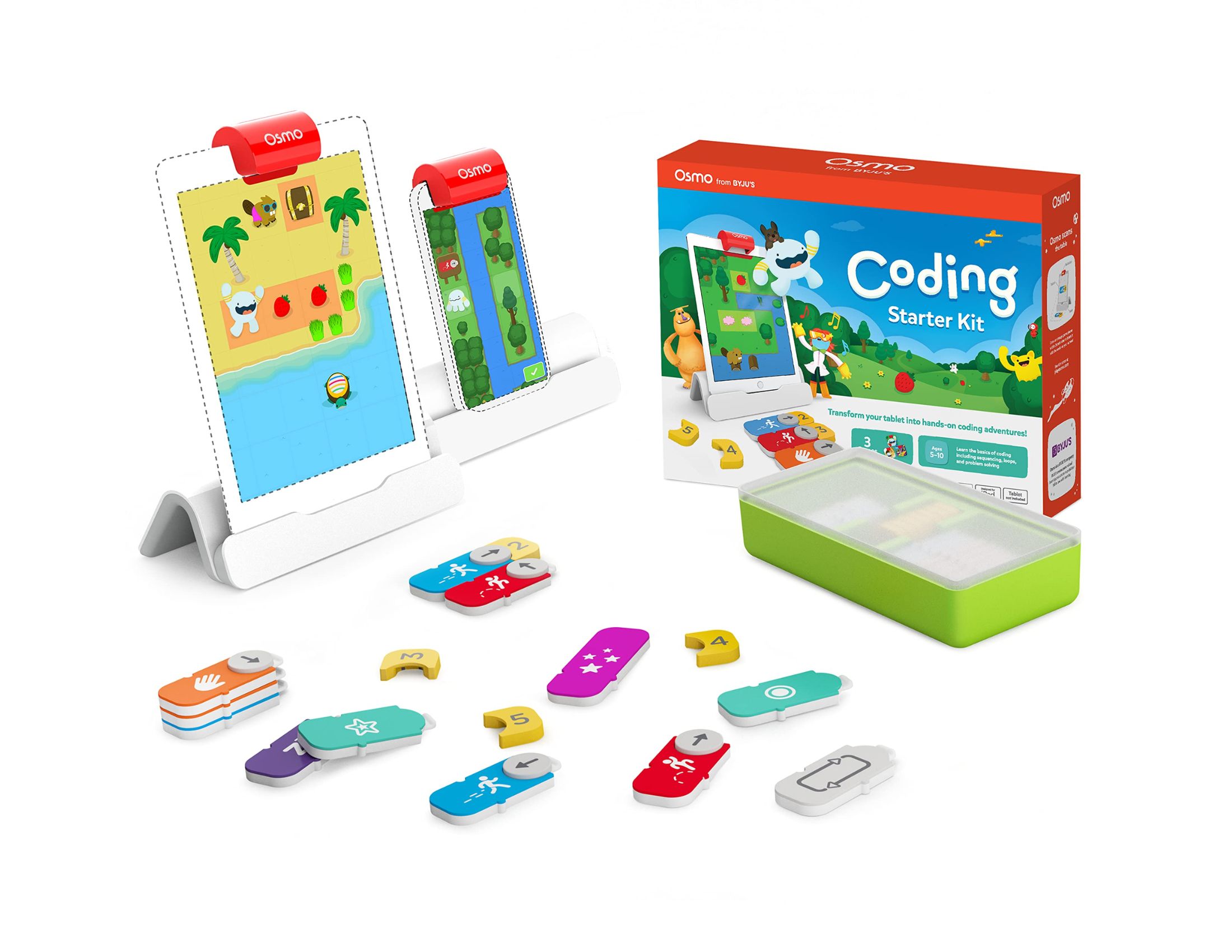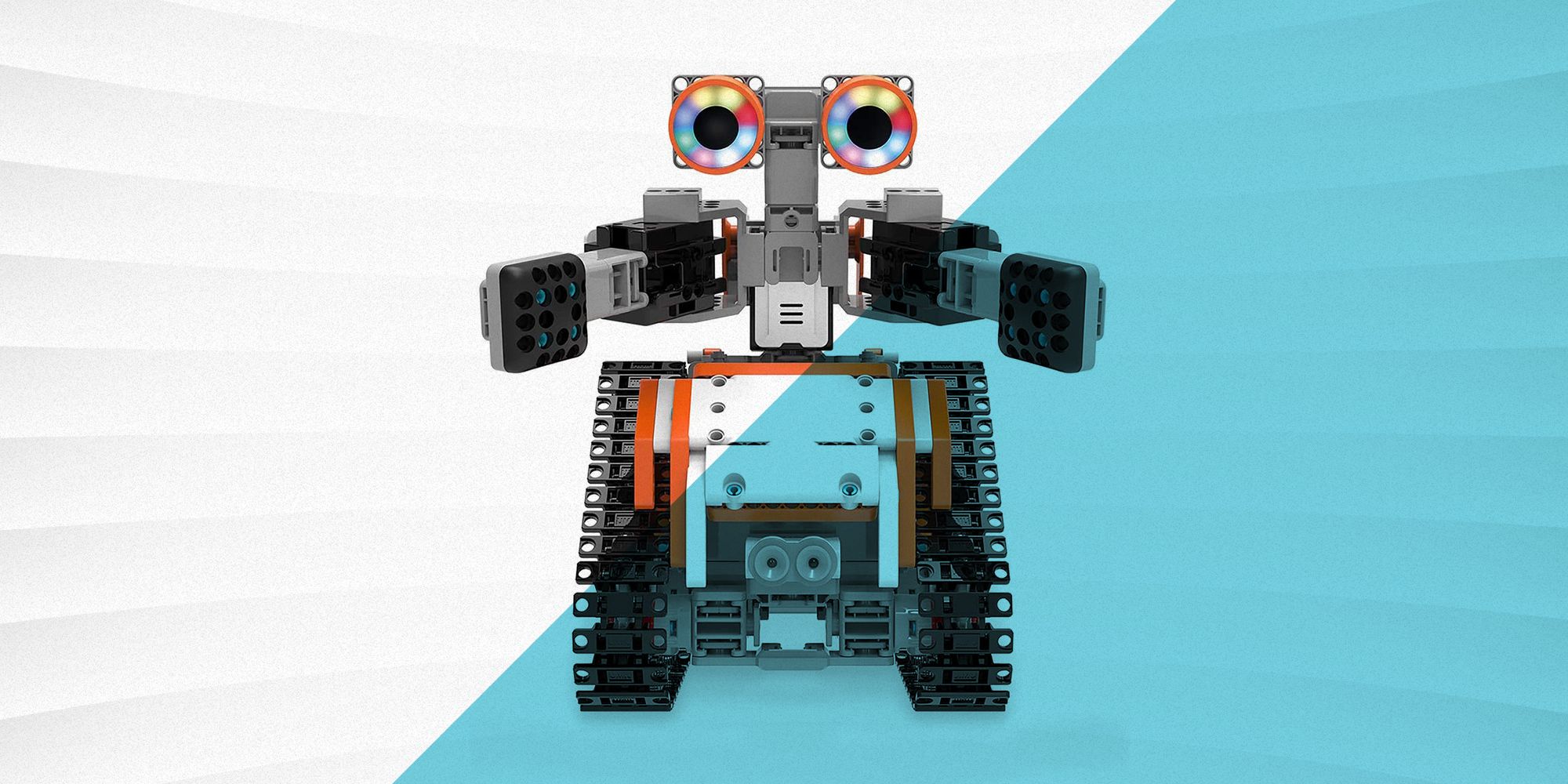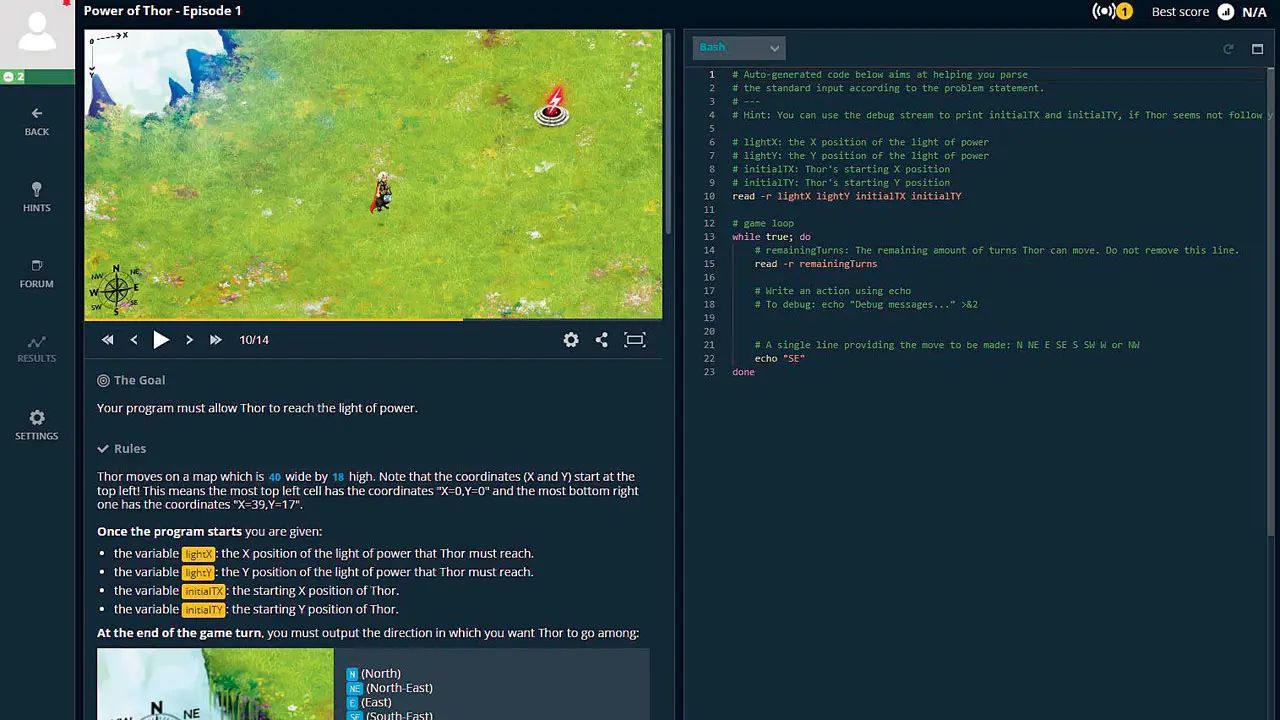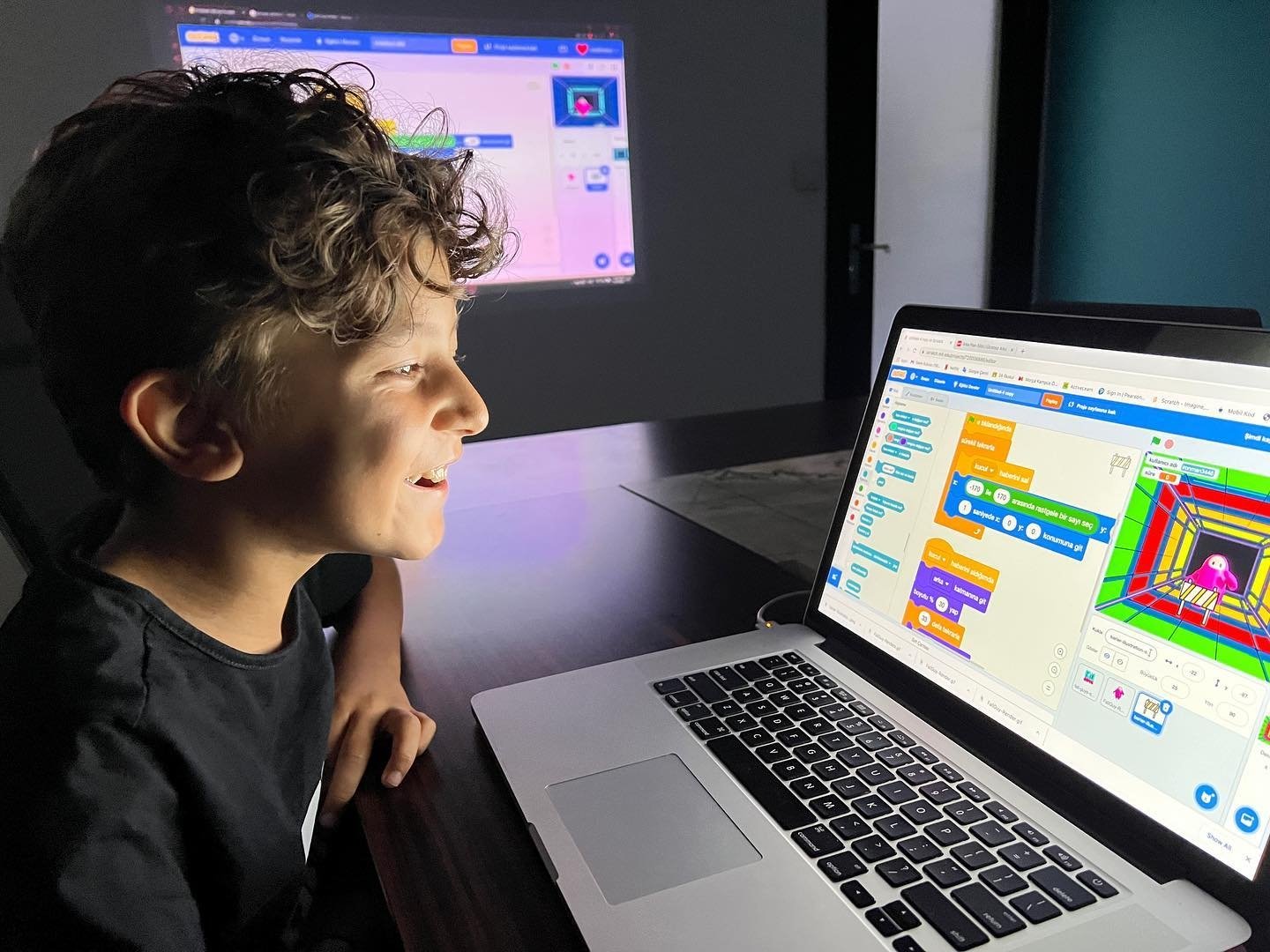Introduction
Welcome to the world of coding! Whether you’re a complete beginner or someone looking to expand your skillset, learning coding is a decision that can unlock many opportunities in today’s digital age. Coding, also known as programming, is the process of creating instructions for computers to perform specific tasks. It is the backbone of websites, mobile apps, software, and much more.
In this article, we will explore the why’s and how’s of learning coding. We’ll discuss the importance of coding skills in various industries, guide you on choosing the right programming language, help you set up your development environment, and provide resources for learning coding online. Whether you prefer free online courses or are considering paid coding courses and bootcamps, we’ve got you covered.
Learning to code can be an incredibly rewarding and empowering experience. It not only enhances your problem-solving abilities but also opens up a world of creativity and innovation. With coding skills, you can turn your ideas into reality and make a tangible impact on the digital landscape.
By the end of this article, you’ll have a clear understanding of how to get started on your coding journey. So, whether you’re dreaming of becoming a web developer, app creator, or data scientist, let’s dive right in and discover the world of coding!
Why Should You Learn Coding?
Learning coding has become increasingly relevant in today’s technology-driven society. Whether you’re a student, a professional looking to diversify your skillset, or someone seeking a career change, here are some compelling reasons why learning coding is beneficial:
1. Job Opportunities:
Coding skills are in high demand across various industries. From web development to data analysis to artificial intelligence, there are abundant job opportunities for programmers. By learning coding, you position yourself for a fulfilling and lucrative career.
2. Problem-Solving Skills:
Coding requires logical thinking and problem-solving abilities. It trains your mind to break complex problems into smaller, more manageable parts and develop step-by-step solutions. These skills extend beyond coding and are invaluable in all aspects of life.
3. Creativity and Innovation:
Coding is a creative process that allows you to bring your ideas to life. Whether you’re designing a website, developing a mobile app, or creating a game, coding empowers you to unleash your creativity and express your unique vision.
4. Understanding Technology:
In today’s digital world, understanding technology is essential. Learning coding gives you a deeper understanding of how software and technology work. It enables you to navigate the digital landscape confidently and make informed decisions about technology-related matters.
5. Collaboration and Teamwork:
Coding often involves working in teams to tackle complex projects. Learning coding enhances your ability to collaborate effectively, communicate ideas clearly, and work cohesively with others. These collaborative skills are essential in many professional environments.
6. Building Analytical Skills:
Coding fosters analytical thinking and attention to detail. When writing code, every character and symbol matter. Building programs requires precision and thoroughness, honing your analytical skills and improving your attention to detail.
7. Entrepreneurship and Innovation:
For aspiring entrepreneurs, coding skills can be a game-changer. It enables you to prototype ideas, create minimum viable products (MVPs), and launch your own digital products or startups. Coding provides the foundational knowledge to turn your entrepreneurial dreams into reality.
These are just a few reasons why learning coding is a worthwhile pursuit. Whether you’re interested in the technical aspects or looking to enhance your problem-solving abilities, coding opens up a world of possibilities and unlocks doors to exciting opportunities.
Choosing the Right Programming Language
With numerous programming languages available, it can be overwhelming to decide which one to learn. Each language has its own strengths, applications, and learning curves. Here are some factors to consider when choosing the right programming language:
1. Purpose and Goal:
Consider your purpose and goal for learning coding. Are you interested in web development, mobile app development, data analysis, or artificial intelligence? Each field may have preferred programming languages. Research the industry trends and job requirements to make an informed choice.
2. Difficulty Level:
Take into account your experience and comfort with technology. Some programming languages, like Python, are beginner-friendly and have a simpler syntax. Others, such as C++ or Java, may require more time and effort to grasp. Start with beginner-friendly languages if you’re new to coding.
3. Community and Support:
Consider the size and supportiveness of the programming language’s community. Larger communities offer more resources, tutorials, and forums where you can seek help and guidance. A strong community ensures a faster learning curve and access to a wealth of knowledge.
4. Job Market Demand:
Research the job market demand for specific programming languages. Some languages, like JavaScript or Python, are widely used and sought after by employers. By choosing a language in high demand, you increase your chances of finding job opportunities and advancing your career.
5. Ecosystem and Tools:
Examine the ecosystem surrounding a programming language, including frameworks, libraries, and development tools available. A rich ecosystem provides a range of resources and simplifies the development process. It also indicates the language’s longevity and ongoing community support.
6. Personal Interest:
Ultimately, consider your personal interest and motivation. Learning coding requires dedication and effort. Choose a programming language that aligns with your interests, as you’ll be more engaged and motivated to learn.
Remember, there’s no one “best” programming language. Different languages excel in different areas, and your choice should align with your goals, interests, and market demand. Don’t be afraid to explore multiple languages and experiment with projects to gain hands-on experience and find the language that suits you best.
Setting Up Your Development Environment
Before you begin coding, it’s important to set up a proper development environment to streamline your work. Here are the essential steps to set up your coding environment:
1. Choose an Integrated Development Environment (IDE) or Text Editor:
An IDE or text editor is where you write and edit your code. Popular choices include Visual Studio Code, Sublime Text, and Atom. Choose the one that suits your preferences, offers helpful features like syntax highlighting and code completion, and supports the programming language you’ll be working with.
2. Install a Version Control System:
A version control system, such as Git, allows you to keep track of changes in your code and collaborate with others. Install Git on your computer and learn the basic commands for initializing repositories, committing changes, and branching code.
3. Set Up a Terminal:
A terminal or command prompt is where you execute commands to interact with your development environment. Windows users can use Command Prompt or PowerShell, while macOS and Linux users have Terminal built-in. Familiarize yourself with basic terminal commands for navigating directories and running code.
4. Install the Required Programming Language:
Based on the programming language you’ve chosen, install the necessary software development kit (SDK) or interpreter. Many languages, like Python or JavaScript, have official websites with easy-to-follow installation instructions. Make sure to install the appropriate version for your operating system.
5. Set Up a Local Development Server:
Depending on your coding needs, you may need to set up a local development server. This is essential for web development, as it allows you to test and preview your websites or web applications locally. Popular local server options include Apache, Nginx, or Node.js.
6. Install Necessary Libraries and Frameworks:
If you’re working with a specific programming language or framework, research and install any additional libraries or frameworks required. These can enhance your development process and provide pre-built solutions for common tasks.
7. Configure Editor Extensions and Plugins:
Customize your IDE or text editor by installing relevant extensions or plugins. These can improve productivity, assist with code formatting, offer debugging capabilities, and provide integration with other tools.
By following these steps, you’ll have a well-equipped development environment ready for coding. Remember, as you progress and explore new projects, you may need to install additional tools and software specific to your requirements. Continuously update and optimize your setup to enhance your coding experience and productivity.
Online Resources for Learning Coding
Learning coding has never been more accessible, thanks to the vast array of online resources available. Whether you prefer self-paced tutorials, interactive coding platforms, or video-based lessons, here are some excellent online resources to kickstart your coding journey:
1. Codecademy:
Codecademy is a popular platform offering interactive coding courses for various programming languages. Their step-by-step lessons provide hands-on experience, allowing you to practice coding concepts right in the browser. Codecademy offers both free and paid options, with a focus on web development, data science, and computer science fundamentals.
2. FreeCodeCamp:
FreeCodeCamp is a free, non-profit online platform that offers comprehensive coding curriculum. Their interactive lessons cover HTML, CSS, JavaScript, and other technologies. FreeCodeCamp also emphasizes real-world projects and provides opportunities to contribute to open-source projects, which can enhance your portfolio and practical coding skills.
3. Udemy:
Udemy hosts a vast library of coding courses taught by industry professionals. Their courses range from beginner to advanced levels and cover a wide variety of programming languages and frameworks. Udemy offers both free and paid courses, with frequent discounts available. Look for highly rated courses with good reviews to ensure a quality learning experience.
4. Khan Academy:
Khan Academy provides free, self-paced coding courses suitable for beginners. Their interactive exercises and projects teach programming concepts and encourage hands-on learning. Khan Academy covers topics such as JavaScript, HTML, CSS, and SQL, along with computer science fundamentals.
5. Coursera and edX:
Coursera and edX are online learning platforms that partner with universities and organizations to offer a wide range of coding courses. These platforms offer both free and paid options, providing access to high-quality courses taught by experts from renowned institutions. You can earn certificates upon completion, making them valuable for showcasing your skills to employers.
6. YouTube:
YouTube is an excellent resource for learning coding, with countless tutorials and coding channels available. From beginner-friendly lessons to advanced topics, you can find videos covering various programming languages, frameworks, and coding tips and tricks. Some popular coding channels include Traversy Media, The Net Ninja, and Programming with Mosh.
7. Documentation and Official Websites:
For specific programming languages or frameworks, official documentation and websites are invaluable resources. They provide comprehensive explanations, code samples, and tutorials. Examples include the Mozilla Developer Network (MDN) for web development, the Python official documentation, and the React.js documentation.
These online resources serve as a starting point for your coding journey. Explore different platforms and find the learning method that suits your learning style. Remember, consistent practice and hands-on projects are key to developing your coding skills. Learning coding online allows you to progress at your own pace and adapt your learning based on your specific interests and goals.
Free Online Coding Courses for Beginners
If you’re a beginner looking to dip your toes into the world of coding without breaking the bank, there’s good news – there is an abundance of free online coding courses available. These courses provide an excellent foundation for learning coding concepts and getting hands-on coding experience. Here are some notable platforms offering free coding courses for beginners:
1. Codecademy:
Codecademy offers a wide range of free coding courses for beginners in different programming languages, including HTML, CSS, JavaScript, Python, and more. The interactive lessons provide an immersive learning experience, allowing you to practice your coding skills in real-time and receive instant feedback.
2. FreeCodeCamp:
FreeCodeCamp is a fantastic platform that offers a comprehensive curriculum for learning coding for free. Their beginner-friendly courses cover HTML, CSS, JavaScript, and other popular technologies. Alongside the lessons, they also emphasize practical projects, which help reinforce your learning and build a portfolio of coding projects.
3. Khan Academy:
Khan Academy offers free coding courses suitable for beginners. Their interactive exercises and projects guide you through coding fundamentals, including JavaScript, HTML, CSS, and SQL. The platform provides a user-friendly learning environment, making it ideal for those new to coding.
4. Coursera:
Coursera is a renowned online learning platform that partners with universities and organizations to provide free coding courses for beginners. You can access video lectures, quizzes, and assignments in various programming languages and frameworks. Coursera offers the option to audit courses for free, or you can also choose to pay for a certificate upon completion.
5. edX:
edX is another platform that offers free coding courses from top institutions worldwide. With their beginner-focused courses, you can learn programming languages like Python, JavaScript, and more. edX also provides the option to earn a certificate for a fee if you wish to showcase your skills to potential employers.
6. MIT OpenCourseWare:
MIT OpenCourseWare is a treasure trove of free educational resources, including coding courses. You can access lecture notes, assignments, and coding projects from actual MIT courses. While these courses may be more challenging, they offer a rigorous learning experience and the opportunity to learn from one of the world’s most prestigious institutions.
7. YouTube:
YouTube is a wealth of free coding tutorials and courses. Many talented creators share beginner-friendly coding lessons, covering a wide array of programming languages and frameworks. Channels like The Coding Train, Traversy Media, and Programming with Mosh provide valuable resources for beginners.
These free online coding courses provide an excellent starting point for beginners looking to learn coding. Remember to dedicate consistent time and effort to practice coding, and complement your learning with hands-on projects to solidify your knowledge. With these resources at your disposal, you can embark on your coding journey without spending a dime.
Paid Coding Courses and Bootcamps
For those looking for a more structured and immersive learning experience, paid coding courses and bootcamps offer intensive programs designed to equip learners with comprehensive coding skills. While these options require a financial investment, they often provide a faster and more specialized path to becoming a proficient coder. Here are some popular paid coding courses and bootcamps:
1. General Assembly:
General Assembly offers a range of coding courses and bootcamps both online and in person. Their programs cover various programming languages and frameworks, including web development, data science, and user experience design. General Assembly is known for its comprehensive curriculum and hands-on projects, preparing learners for real-world coding challenges.
2. Flatiron School:
Flatiron School offers coding bootcamps in web development, data science, and other tech fields. Their programs are intensive and immersive, covering the latest industry technologies and providing mentorship and career support. Flatiron School emphasizes hands-on coding projects and real-world applications to develop practical skills.
3. Udacity:
Udacity is an online learning platform offering coding nanodegree programs. Their paid courses range from beginner to advanced levels and cover topics such as front-end web development, artificial intelligence, and mobile app development. Udacity courses are developed in collaboration with industry leaders, providing learners with valuable industry insights.
4. Le Wagon:
Le Wagon offers coding bootcamps in various locations worldwide. Their full-time and part-time programs cover web development and data science, equipping learners with in-demand coding skills. Le Wagon bootcamps focus on hands-on learning, collaborative projects, and teaching coding in a practical and efficient way.
5. Springboard:
Springboard offers online coding bootcamps with a focus on career transition. Their programs include full-stack web development, data science, and UI/UX design. Springboard offers personalized mentorship, industry-relevant projects, and career services to help learners successfully transition into a coding career.
6. Bloc:
Bloc is an online coding bootcamp with self-paced and mentor-led programs. Their courses cover web development, mobile development, and design. Bloc’s mentorship model provides personalized guidance and feedback, allowing learners to progress at their own pace while receiving support from industry professionals.
7. Thinkful:
Thinkful offers online coding bootcamps in various disciplines, including software engineering, data science, and product management. Their programs provide in-depth curriculum, mentorship, and career coaching to help learners become job-ready professionals in the tech industry.
Paid coding courses and bootcamps offer structured learning environments, expert instruction, and career support to accelerate your coding journey. While they require a financial commitment, they often provide a fast-track to acquiring in-demand coding skills and preparing for a successful career in technology.
Building Your Coding Projects
Building your coding projects is an essential step in cementing your knowledge and showcasing your coding skills. It allows you to apply what you’ve learned and gain practical experience in solving real-world problems. Here are some key steps to consider when embarking on coding projects:
1. Define Project Goals:
Start by defining clear goals for your coding project. What problem will it solve? What functionality should it have? Defining the project scope helps you stay focused and ensures you have a clear direction to work towards.
2. Plan and Design:
Before diving into writing code, spend time planning and designing your project. Create a high-level overview of the structure and workflows, and consider the user experience and interface design. This step helps you think through the project’s architecture and reduces the chances of getting stuck during implementation.
3. Break It Down:
Break down your project into smaller, manageable tasks. This approach, known as “task decomposition,” allows you to tackle one aspect at a time and track progress more effectively. Consider using project management tools like Trello or Asana to organize and track your tasks.
4. Start Coding:
With a plan in place, it’s time to start coding. Begin with the core functionality of your project, gradually adding features and refining the code. Follow coding best practices, such as writing clean and modular code, utilizing version control, and documenting your code for future reference.
5. Test and Debug:
Regularly test your code as you progress through the project. Debugging is an integral part of the coding process, and identifying and fixing errors early on saves time and effort later. Use debuggers, logging, and test-driven development techniques to ensure your project works as expected.
6. Iterate and Improve:
Iterate on your project, seeking ways to improve its functionality, performance, and user experience. Solicit feedback from others, whether it’s fellow coders or potential users, and incorporate their suggestions to make your project even better.
7. Deploy and Showcase:
Once your project is complete, deploy it to a live environment for others to interact with. This could be a web hosting platform, an app store, or a public code repository. Share your project with others, add it to your portfolio, and highlight it in job applications to showcase your practical coding skills.
Building coding projects provides invaluable hands-on experience and demonstrates your expertise to potential employers or clients. Remember, the process of building projects is just as important as the final result. Embrace challenges, learn from mistakes, and celebrate your accomplishments as you bring your coding projects to life.
Collaborating with Other Coders
Collaboration is an integral part of the coding world. Working with other coders not only enhances your skills but also exposes you to different perspectives, ideas, and approaches to problem-solving. Here are some valuable tips for collaborating effectively with other coders:
1. Communication and Collaboration Tools:
Use communication and collaboration tools to streamline collaboration. Platforms like Slack, Microsoft Teams, and Discord provide channels for communication and allow for easy file sharing and collaboration. Utilize project management tools like Jira, Asana, or GitHub Issues to assign tasks, track progress, and foster transparency.
2. Define Clear Roles and Responsibilities:
Establish clear roles and responsibilities within the team to ensure everyone understands their tasks and areas of expertise. Clearly define who is responsible for code reviews, testing, documentation, and other project-related activities. This clarity prevents duplication of effort and confusion.
3. Utilize Version Control:
Version control systems, such as Git, are vital for collaborative coding. Utilize branching and merging strategies to coordinate work effectively and avoid conflicts. Document your code changes and commit messages to provide context and make it easier for others to understand and review your work.
4. Code Documentation and Style Guides:
Consistent code documentation and adherence to style guides are crucial for collaborative projects. Follow agreed-upon coding conventions to ensure readability and maintainability of the code. Comment your code and provide clear documentation to facilitate understanding for other team members.
5. Code Reviews and Feedback:
Encourage frequent code reviews and feedback within the team. Code reviews help identify bugs, improve code quality, and promote knowledge sharing. Provide constructive feedback to your teammates and be open to receiving feedback on your own code. This iterative process results in better code and continuous learning.
6. Effective Problem Solving:
When faced with challenges or bugs, collaborate effectively to find solutions. Encourage open discussions, brainstorming sessions, and pair programming, where two developers work together on the same code. Solicit input from team members and leverage their expertise to come up with efficient and effective solutions.
7. Embrace Continuous Integration and Deployment (CI/CD):
Employ CI/CD practices to automate build and deployment processes. Continuous integration ensures that code changes from all team members are regularly and seamlessly merged, while continuous deployment streamlines the release process. This approach helps minimize conflicts and fosters a faster and smoother collaborative workflow.
Collaborating with other coders is an opportunity for growth and learning. Embrace teamwork, effective communication, and sharing of knowledge to create efficient and successful collaborative projects. By working together, you can tackle complex challenges, create innovative solutions, and produce high-quality code that exceeds what individuals can accomplish alone.
Debugging and Troubleshooting in Coding
Debugging and troubleshooting are essential skills for every coder. They involve identifying and fixing errors, issues, and unexpected behavior in your code. Debugging is a systematic process that requires patience, attention to detail, and a methodical approach. Here are some key strategies to help you effectively debug and troubleshoot your code:
1. Understand the Problem:
Start by understanding the problem at hand. Identify the symptoms, reproduce the issue consistently, and gather any relevant error messages or console outputs. This initial step will give you a clear starting point for debugging.
2. Review Your Code:
Thoroughly review your code, paying specific attention to areas related to the problem. Check for syntax errors, logical errors, and any potential issues with variable assignments, conditionals, or loops. Make sure you understand the purpose and flow of your code before diving into the debugging process.
3. Use Debugging Tools:
Utilize the debugging tools available in your integrated development environment (IDE) or text editor. Set breakpoints at critical points in your code and run it in debug mode. This allows you to step through the code line by line, observe variable values, and identify the exact location of errors or unexpected behavior.
4. Print Debugging:
Add print statements or log statements strategically throughout your code to trace the flow of control and track the values of variables. Print relevant information to the console to help you understand how your code is behaving and identify any discrepancies between expected and actual values.
5. Check Inputs and Outputs:
Confirm that your inputs and outputs are as expected. Verify that your functions are receiving the correct inputs and returning the desired outputs. This step is crucial in ensuring that your code is functioning as intended and can help pinpoint where errors may be occurring.
6. Divide and Conquer:
If you have a large codebase or complex project, break it down into smaller sections or test cases. Isolate the problem by running specific sections of code separately or creating minimal reproducible examples. This approach helps narrow down the scope and focus your debugging efforts.
7. Search for Solution Resources:
When encountering difficult bugs, search for resources that may provide insights or solutions. Online forums, developer communities, and official documentation can be invaluable in resolving complex issues. Don’t hesitate to ask for help and leverage the collective knowledge of the coding community.
Remember, debugging is a normal part of the coding process, and even experienced coders encounter challenges. Approach debugging with a positive and systematic mindset, focusing on one problem at a time. As you gain experience, your debugging skills will improve, and you’ll become more efficient at finding and fixing errors.
Building a Portfolio to Showcase Your Coding Skills
Building a portfolio is crucial for showcasing your coding skills and establishing your credibility as a coder. A portfolio demonstrates your abilities, creativity, and range of projects to potential employers or clients. Here are some key steps to build an impressive coding portfolio:
1. Select Your Best Projects:
Choose a selection of your best coding projects to include in your portfolio. Select projects that showcase your skills, highlight your expertise in specific programming languages or frameworks, and demonstrate your ability to solve real-world problems. Include projects that are diverse in complexity and scope.
2. Provide Project Details:
For each project in your portfolio, provide details that give insight into what the project is about, the technologies used, and your role in its development. Explain the problem you aimed to solve, the challenges you encountered, and the solutions you implemented. Including this information helps potential employers or clients understand your thought process and approach to coding.
3. Include Code Samples:
Include snippets or excerpts of your code to demonstrate your coding style, organization, and skills. Showcase clean and well-commented code that showcases your best practices. Consider using platforms like GitHub or GitLab to display and share your code with others.
4. Document Your Projects:
Provide documentation or README files for your projects. Write clear and concise explanations of the project’s purpose, features, installation instructions, and usage guide. Including documentation demonstrates your ability to communicate effectively and ensures others can understand and interact with your projects.
5. Showcase Your Design and UI/UX:
If you’ve worked on front-end projects or have UI/UX design skills, include screenshots or visuals that showcase your design aesthetic and user interface designs. Highlight any user-centered design principles you considered and demonstrate your ability to create visually appealing and user-friendly experiences.
6. Highlight Collaborative Projects:
If you’ve collaborated on coding projects, mention your collaboration experience and highlight the teamwork aspect. Describe your role, the collaborative tools used, and the outcomes achieved as a team. Collaborative projects demonstrate your ability to work effectively in a team environment.
7. Continuously Update and Refine:
Regularly update and refine your coding portfolio. Add new projects as you complete them and remove older projects that no longer align with your current skill level or focus. As you gain more experience and develop new skills, update your portfolio to reflect your growth and expertise.
Remember, a coding portfolio is an ongoing representation of your skills and should reflect your best work. Regularly review and refine your portfolio to ensure it effectively showcases your capabilities and aligns with your career aspirations. A strong portfolio provides a visual and tangible representation of your coding skills, opening doors to exciting opportunities in the coding world.
Next Steps in Your Coding Journey
Embarking on your coding journey is just the beginning. It’s important to keep learning, growing, and pushing yourself to expand your coding skills and knowledge. Here are some valuable next steps to continue your coding journey:
1. Expand Your Coding Knowledge:
Continue learning new programming languages, frameworks, or technologies. Explore areas that interest you or align with your career goals. Online tutorials, documentation, and coding courses are excellent resources for deepening your understanding of various coding concepts.
2. Build More Coding Projects:
Keep building more coding projects to reinforce your skills and gain practical experience. Challenge yourself with more complex projects that push the boundaries of your abilities. Building diverse projects allows you to apply your skills to different domains and expand your portfolio.
3. Contribute to Open-Source Projects:
Get involved in open-source projects to collaborate with experienced developers and contribute to real-world projects. Contributing to open-source software not only enhances your coding skills but also demonstrates your ability to work with others and make meaningful contributions to the coding community.
4. Engage in Coding Communities:
Join coding communities, online forums, or attend coding meetups to connect with fellow developers. Engaging with like-minded individuals allows you to learn from others, ask questions, discuss coding challenges, and stay updated on the latest industry trends and practices.
5. Keep Practicing and Revisiting Fundamentals:
Continuously practice coding and revisit fundamental concepts. Daily coding challenges, coding exercises, or coding katas can help sharpen your problem-solving skills and keep your coding knowledge fresh. Reinforce your understanding of algorithms, data structures, and core programming principles.
6. Seek Feedback:
Solicit feedback on your coding projects and code from experienced developers. Their insights and suggestions can help you identify areas for improvement and refine your coding practices. Actively seeking feedback allows you to grow as a coder and gain new perspectives.
7. Consider Specialization or Advanced Topics:
Once you have a solid foundation, consider specializing in a particular area of coding that interests you. This could be web development, mobile app development, machine learning, or cybersecurity. Dive deeper into advanced topics and keep up with the ever-evolving technology landscape.
Remember, the key to advancing your coding journey is to stay curious, embrace challenges, and maintain a growth mindset. Keep learning, practicing, and pushing yourself to new heights. Whether you aspire to become a full-stack developer, a data scientist, a cybersecurity expert, or an AI specialist, the possibilities in the coding world are endless. Your coding journey is an ongoing adventure, so continue exploring and embracing the opportunities that lie ahead.
Conclusion
Congratulations on embarking on your coding journey! Learning coding is an exciting and rewarding endeavor that opens doors to a multitude of opportunities. Whether you’re a beginner or looking to enhance your coding skills, the key is to stay persistent, curious, and committed to continuous learning.
We explored the importance of learning coding in today’s technology-driven world and discussed how to choose the right programming language based on your goals and interests. We also covered setting up your development environment, utilizing online resources for learning coding, and the benefits of both free and paid coding courses and bootcamps.
Building your coding projects, collaborating with other coders, and mastering the art of debugging and troubleshooting are essential for honing your skills. Remember to document and showcase your projects in a coding portfolio to demonstrate your expertise to potential employers or clients.
As you progress in your coding journey, continually seek new opportunities for growth, such as contributing to open-source projects, engaging in coding communities, and never ceasing to expand your coding knowledge. Keep practicing your coding skills, revisiting fundamental concepts, and staying up-to-date with advancements in the coding world.
The coding journey is an ongoing adventure, with new challenges and exciting possibilities awaiting you. Embrace the learning process, be patient with yourself, and celebrate your achievements along the way. With dedication, hard work, and a passion for coding, you have an incredible opportunity to make a meaningful impact in the digital landscape.









